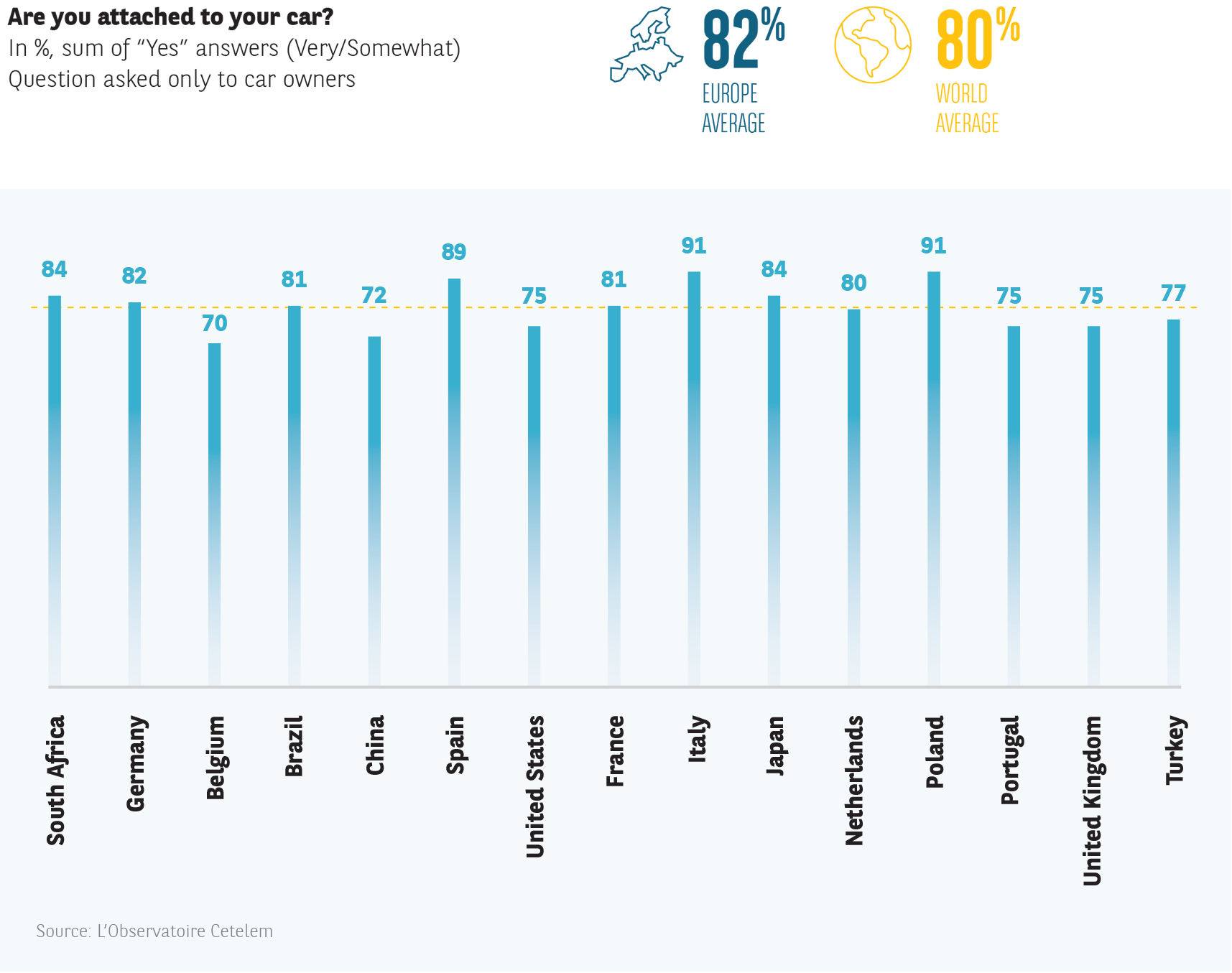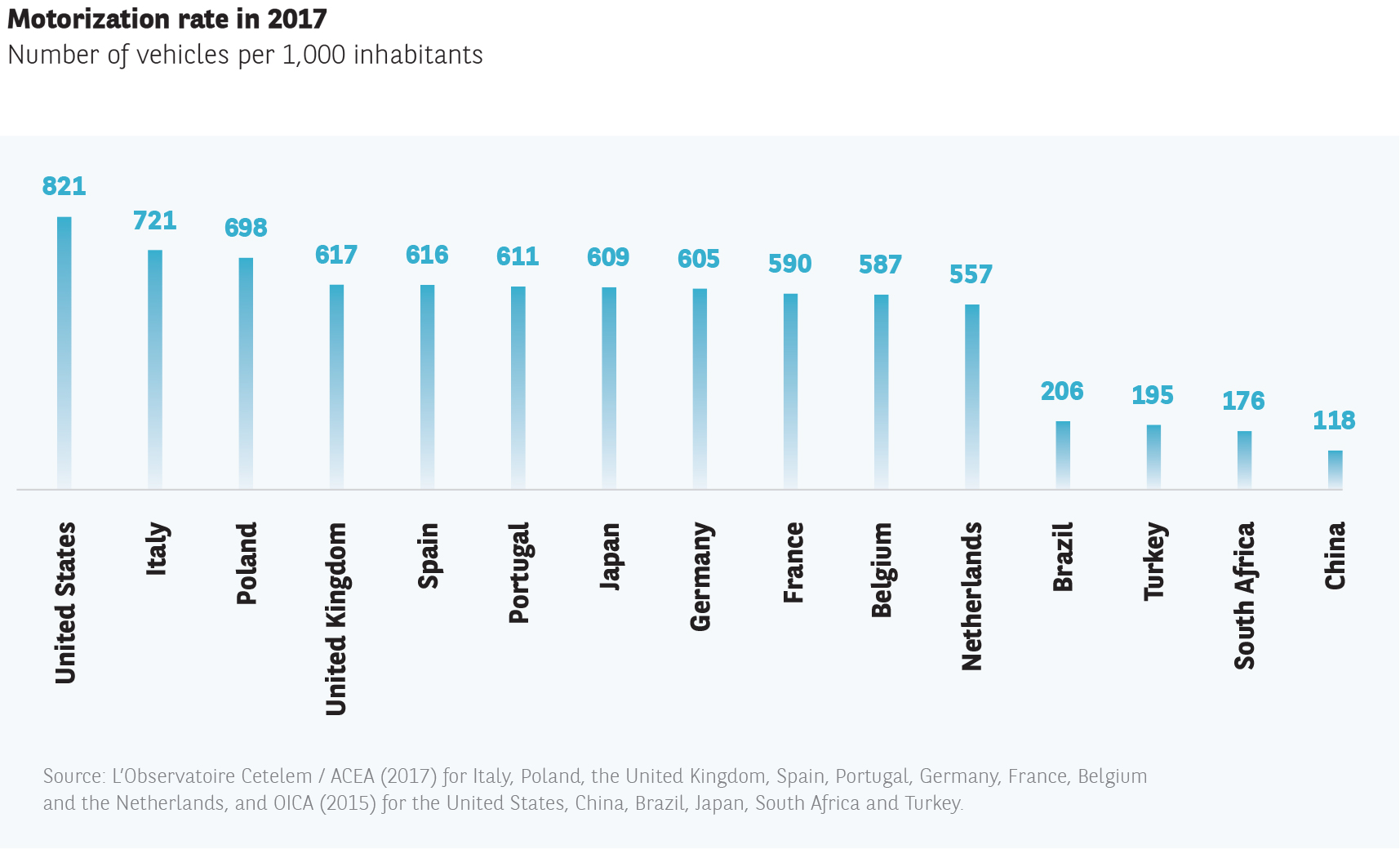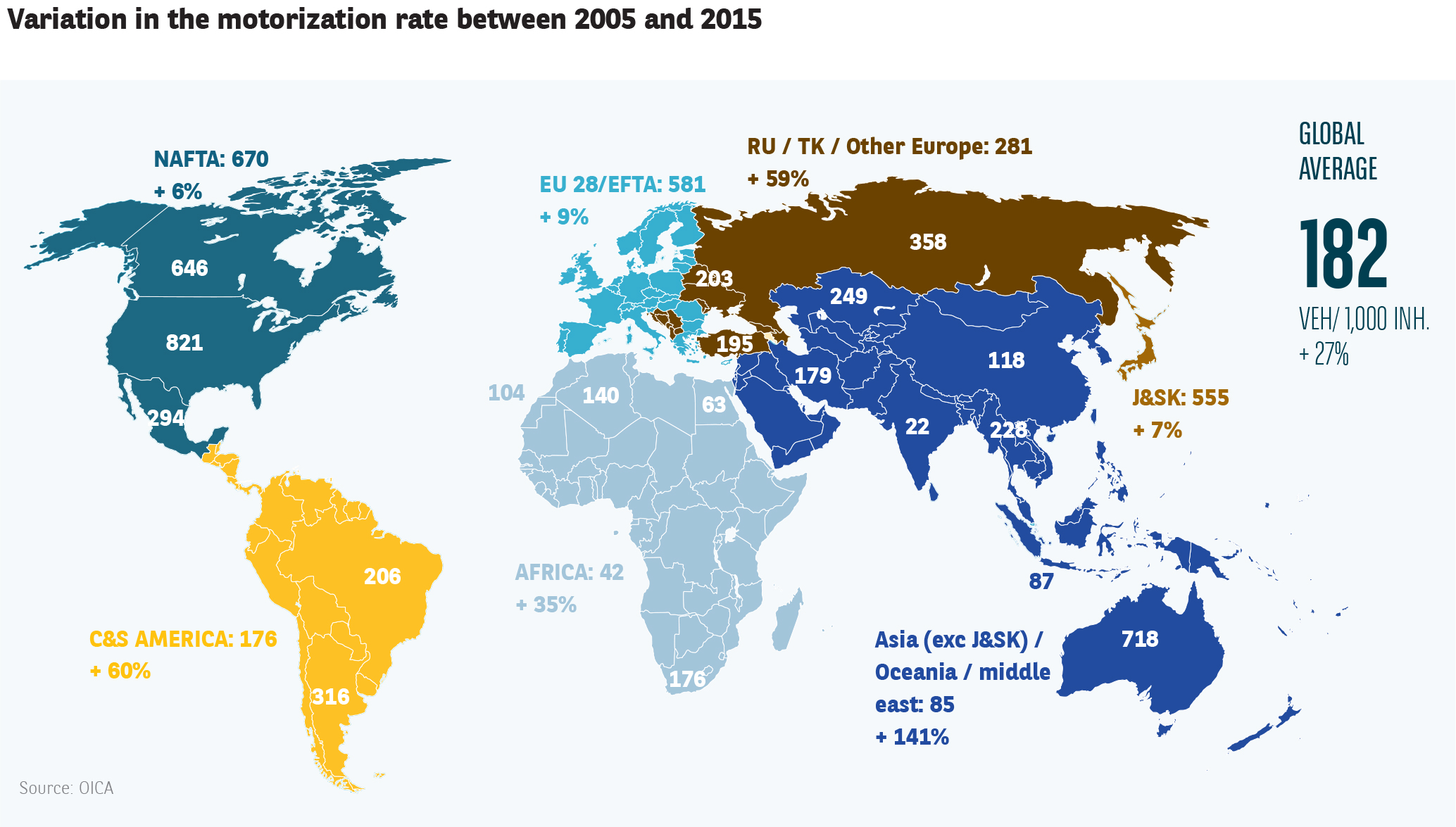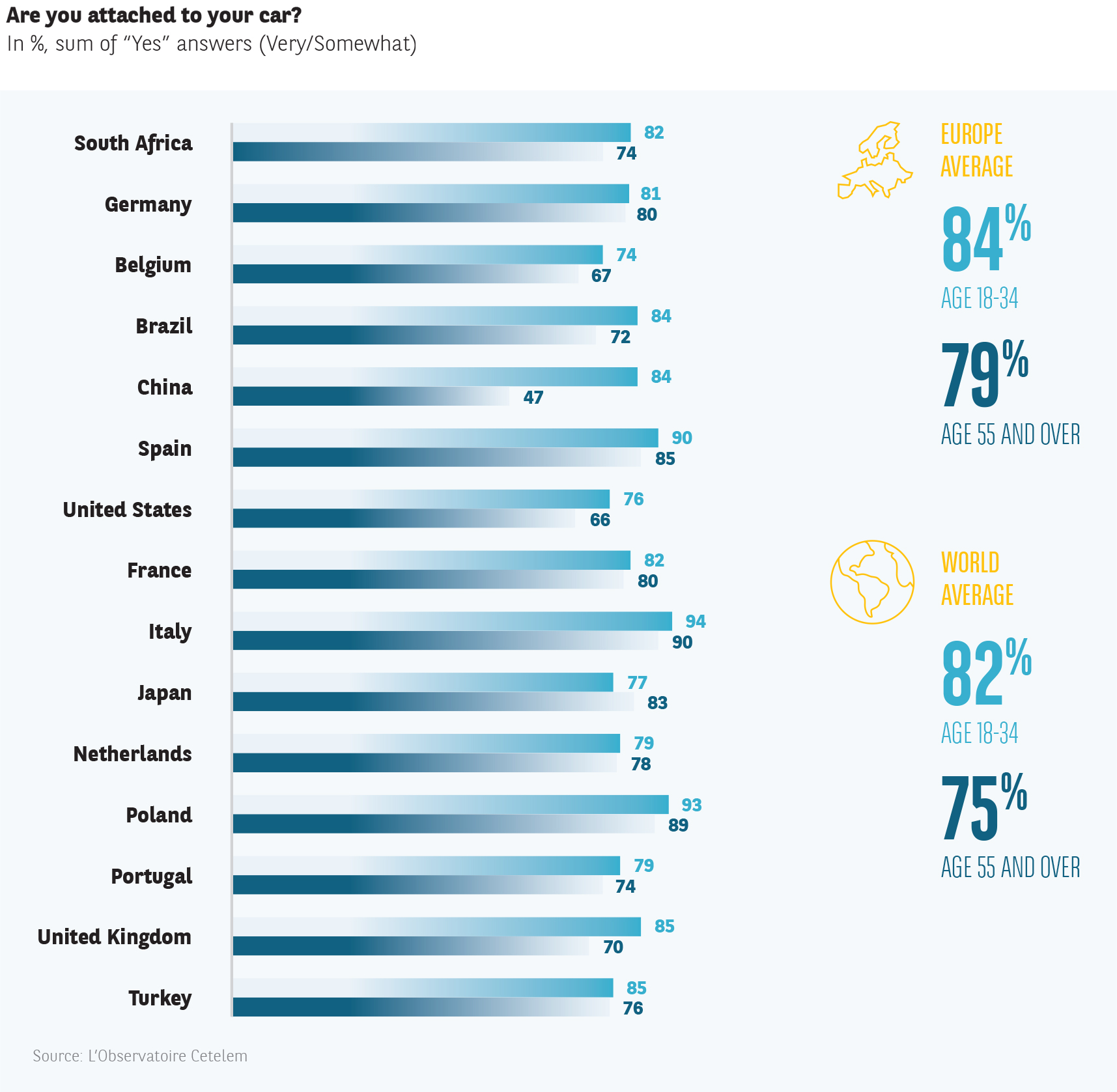An enduring love


But the love motorists have for their vehicle is far from blind, and their feelings are rooted in reason.
A major manufactured product and a symbol of the development of consumerism, the car receives as much praise from enamoured admirers as it does condemnation from its fierce opponents.
Because if any fact has been firmly established since Joseph Cugnot built the first motor vehicle in 1769, it is that the automobile leaves nobody indifferent.
2017’s L’Observatoire Cetelem, entitled “I love my car”, highlighted the fact that 9 out of 10 motorists had a positive or very positive view of cars. 8 out of 10 considered that they simply could not do without them.
AN UNWAVERING ENTHUSIASM
Three years on, the car is almost equally as popular.
8 out of 10 people say they are attached to the vehicle they own (Fig.1). Italy, Poland and Spain are the most enthusiastic (9/10), while Belgium and China are less unanimous (7/10). France posts a result that is close to the average, while the United States, where the car is king, displays a little less fervour.
FIG. 1 :
THE RISING MOTORIZATION RATE: AN EXPRESSION OF LOVE
If proof of the popularity of cars were needed, motorization rates (Fig. 2 and 3) would be among the clearest pieces of evidence. In recent years, these figures have grown continuously in the countries of L’Observatoire Cetelem, with two notable caveats. Large urban centres in the Western world have experienced a decline.
China, where sales are currently falling, continues to see an increase in its motorization rate. However, it still posts the lowest score in this ranking, closely followed by South Africa, Turkey and Brazil. These nations, where motorization rates are lower and have started to take off only recently, form a quartet whose behaviour is homogeneous and contrasts with that of other countries.
This unusual quartet illustrate the geographical divide that affects certain aspects of the global automotive sector.
And it is no surprise that the United States tops the list when it comes to the number of cars per inhabitant.
FIG. 2 :
FIG. 3 :
POPULARITY AMONG THE YOUNG
Another piece of good news for manufacturers is the fact that millennials, i.e., their future customers, are more inclined than their elders to declare their attachment (Fig. 4). This generational difference is certainly the most significant divide highlighted by the survey. In China, millennials are actually more than twice as likely as seniors to voice such attachment. This is in great part down to the breathtaking growth of the automotive sector in recent times. Cars have always been a part of young people’s lives.
This is not the case for seniors, who lived without cars for many years. Moreover, because millennials are naturally more likely to live in cities, people’s fondness for cars is greatest in conurbations with more than 1 million inhabitants. This new schism has led to “city cars” and “rural cars” being perceived differently.
The gap is particularly wide in China, the United States and Japan, which are home to a number of megacities.
FIG. 4 :




